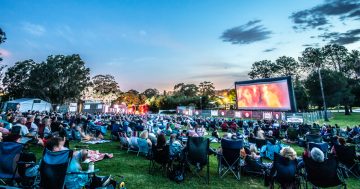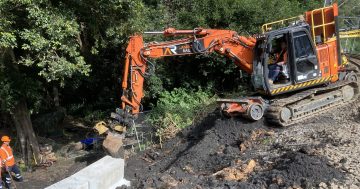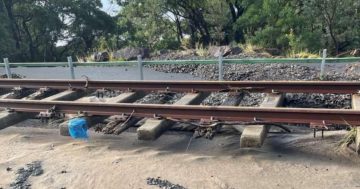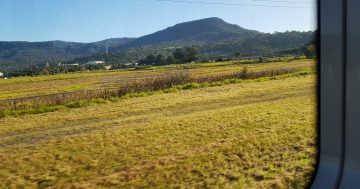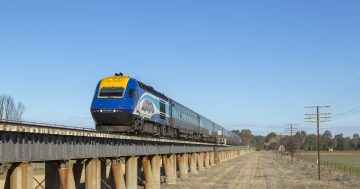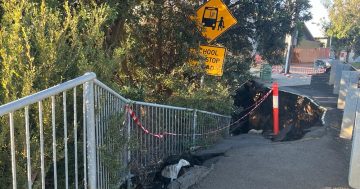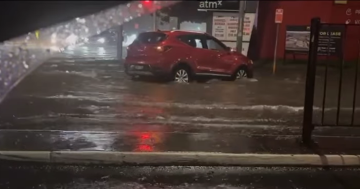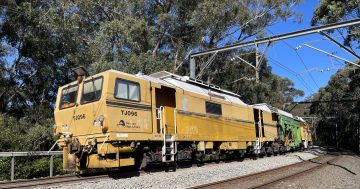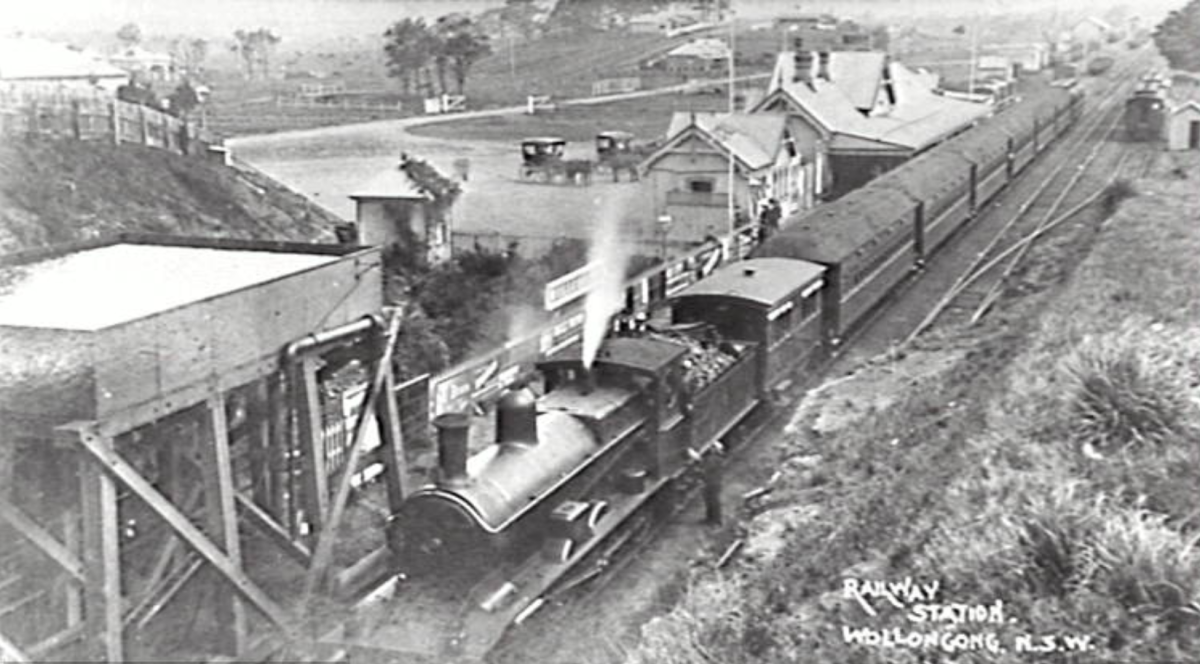
Electrification of the South Coast rail line extended to Wollongong in 1986, but for many commuters, it often feels like train services are still in the steam age. From the collections of Wollongong City Libraries and the Illawarra Historical Society – P02/P02400.
One of my first journalistic assignments when I started working in the Illawarra was pretty straightforward – catch a train to Sydney with a photographer and ask people what they thought about the rail service.
They were not happy travellers. They left home in the dark and in winter got home in the dark. The timetable was crappy – about one “fast” train every 90 minutes – the trains were old, cold in winter and stifling in summer, unreliable and it only took a rain shower for things to fall apart.
It didn’t help that my northbound trip simply stopped somewhere between Corrimal and Thirroul (with no announcements as to the cause/delay, although we later discovered it was due to a death on the line) and the return trip was even later due to heavy rain, forcing the train to crawl for much of the trip home.
You don’t need to read that story to know the overwhelming sentiments among travellers were frustration and anger.
So forgive my cynicism this week when, more than 30 years after my story appeared, the NSW Government proudly announced it was “delivering on an election commitment and improving the South Coast Line for rail commuters”.
When you get to the nitty-gritty of the announcement, it’s spending $10 million to begin the process of examining rail infrastructure along the South Coast Line and develop options for upgrading sections of the line between Sydney and Wollongong.
Begin – again? Before you get your knickers in a knot, I’m not having a shot at the Labor boys and girls, the Libs had their chance too and all we got were pretty words and photo opportunities.
In fact, a quick Google search found the NSW Liberal Coalition government’s 2014 Rail Corridors Strategy for the Sydney-Wollongong rail line. Released under a Freedom of Information request and redacted in part – ironically mostly in reference to the cost – the strategy aimed to deliver reduced travel times to Sydney in under 70 minutes.
The kicker – and probably the reason it’s still sitting on a shelf somewhere gathering dust – “total investment required to deliver new alignments is expected to be of the order of $3.565 billion. This does not include capacity enabling projects which are needed as a result of rapid transit changes to the Illawarra corridor”.
In 2017, the Illawarra Business Chamber commissioned Wollongong University’s SMART Infrastructure Facility to investigate options to improve the speed and reliability of passenger and freight rail transport services between the Illawarra and Sydney.
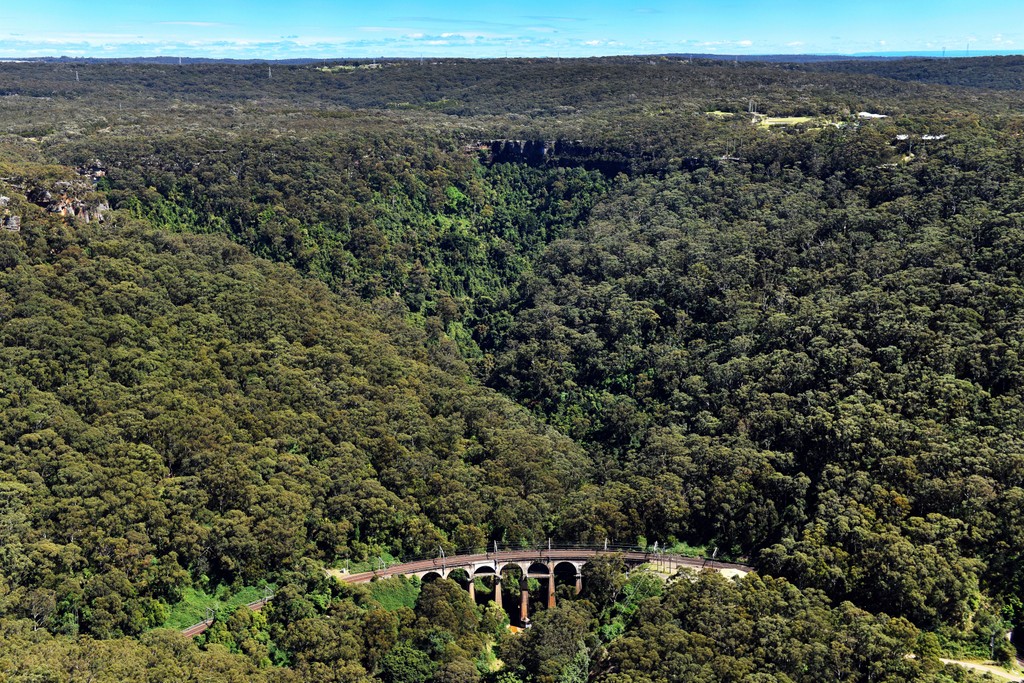
The South Coast rail line runs through beautiful countryside, such as here at Stanwell Park, but the unstable geology and topography of the Illawarra escarpment creates ongoing issues. Photo: Chilby Photography.
It found that reducing passenger commute times on the line was severely challenged by the geological conditions of the Illawarra escarpment and the consequent engineering challenges. In short, it said an investment “in the order of $2 billion” would be required.
It doesn’t matter who’s been in government, it doesn’t matter how many media campaigns are run, or how many expensive reports are prepared which all have the same conclusion (it’s broke and needs fixing) – we’re still waiting … and waiting … and waiting.
In the wake of the Waterfall train disaster in 2003, in which seven people died when the train derailed after an emergency brake failed to activate, commuters’ demands for improvements to the line again made the headlines.
A report at the time quoted Dr Phillip Laird, probably the most vocal and knowledgeable critic of the Illawarra’s rail system.
The University of Wollongong professor was blunt in his assessment of the rail line back then: “We’ve got major problems. We’ve gone backwards. If you look at what the planners were saying 10 years ago, we’ve not come up to scratch. Many of the major projects that should have been done in the 90s need addressing this decade.”
Sound familiar?
Over many decades our long-suffering rail commuters have been promised much by politicians of all persuasions, yet received very little in the way of improvements. They still leave home in the dark and get home in the dark. They’re still left inconvenienced when it rains and their train home is delayed or cancelled. And their travel time to Sydney is still about 90 minutes.
We don’t need more reports to tell us the line sits on unstable land due to the geology and topography of the Illawarra escarpment. Or that when it rains that unstable land tends to become more unstable and is prone to landslips.
We don’t need more reports to tell us freight services share the line in places with passenger services, and demand is increasing for freight from Port Kembla and Sydney.
We do know, and it was refreshing to hear Transport Minister Jo Haylen say it, that any option to upgrade the line will be “expensive, difficult and lengthy”.
However, it will be even more expensive if we continue to twiddle our thumbs and navel-gaze as we begin to think about our options.
And it’s not even worth trying to calculate the cost to the Illawarra and the state if the rail line collapses in the next east coast low and is out of action for months.
It’s gone way beyond the time to begin to look at options; it’s well and truly time to bite the bullet and spend the money to begin the physical work to fix the line – before it’s too late.








